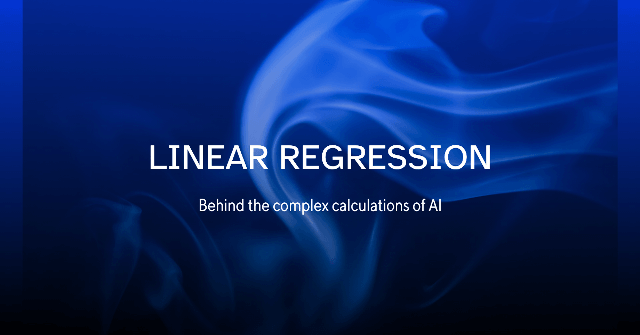Think about predicting the price of your go-to coffee beans next year. Or big retailer may want to estimate its holiday sales figures for the coming season. What do these odd stories have in common? A desire to learn and predict the future using information now.
This is where linear regression’s strength lies, one of the most important statistical tool in both business and applied statistics.
Linear regression is about simply understanding this relationship. It aims to fit a linear equation to the data in order to find the ‘best fit’ line for describing how a dependent variable (we are interested in) changes as a result of one or more independent variables (that we are controlling). Think of it as drawing a straight line through a scatter plot of points to best represent the overall trend.
Consider the housing market. Real estate agents work with linear regression to make predictions about home values and sale prices, leveraging information such as square footage, number of bedrooms, zip codes, and sale price of homes in the area. By crunching data over time, the firm can create a model that predicts the value of new listing, thus assisting both buyers and sellers in making ”educated decisions,” according to their blog post.
The uses go well beyond housing. In finance, experts use linear regression to make predictions about a stock’s price, evaluate risk factors in an investment, and understand how interest rates can affect market performance. This method is widely used in financial planning to make predictions for uncertain economic systems.
Marketers can use linear regression to fine tune their ad budget. They might use a sales and advertising graph to see how these two measures correlate and determine which channels are most effective and how they should distribute their budget.
This marketing analysis enables companies to generate higher ROI and target their potential customers better.
In the manufacturing sectors, linear regression is used to control the quality of the products and optimise the process. By understanding how the production conditions (temperature, pressure etc.) correlate to the quality of the end product, manufacturers can adjust to more optimal settings and reduce the amount of product flaws. This improved process results in a more efficient and less wasteful process.
Such analyses inform effective therapies and influence patient care.
That’s the joy of linear regression: it’s simple and interpretable. The equation yielded also enables one to understand the magnitude and the direction of the relationship of variables. For instance, a positive coefficient means that if one of the independent variables increases the dependent variable also generally tends to increase.
That said, let’s recognize the simplistic nature of linear regression and its limitations. It assumes a linear relationship between variables, which may not always hold true in complex real-world scenarios. Outliers (extreme data points) can also significantly influence the regression line. Furthermore, correlation does not equal causation; just because two variables move together doesn’t necessarily mean one causes the other.
Despite these limitations, linear regression remains a foundational tool in the data science toolkit. Its ability to provide valuable insights and predictions makes it an essential asset for businesses and organizations across the globe.
From predicting consumer behavior to industrial processes, linear regression is used to make decisions and shape the future across many industries. Its ubiquity proves its staying power in a data driven world. The principles of statistical modelling and data analysis that linear regression embodies are the foundation of understanding and navigating the world.
FAQs:
So, wait, what’s the deal with linear regression?
Basically, it’s just some math whiz finding the straight line that best matches a bunch of messy dots (a.k.a. your data points). The goal? Show how one thing changes when another thing does.
Where’s it used?
Oh, all over: finance bros, realtors, marketers scheming your next ad, manufacturing geeks making stuff faster, and yeah, even healthcare folks. It’s everywhere, whether you notice or not.
What are the benefits of linear regression?
It’s easy to understand and interpret and can give you insights into the relationships between variables.
What are the drawbacks of linear regression?
It assumes a linear relationship, can be affected by outliers and doesn’t imply causation.
How does linear regression help with decision making?
By giving you predictions and insights into the relationships between factors, you can make more informed and data driven decisions.



